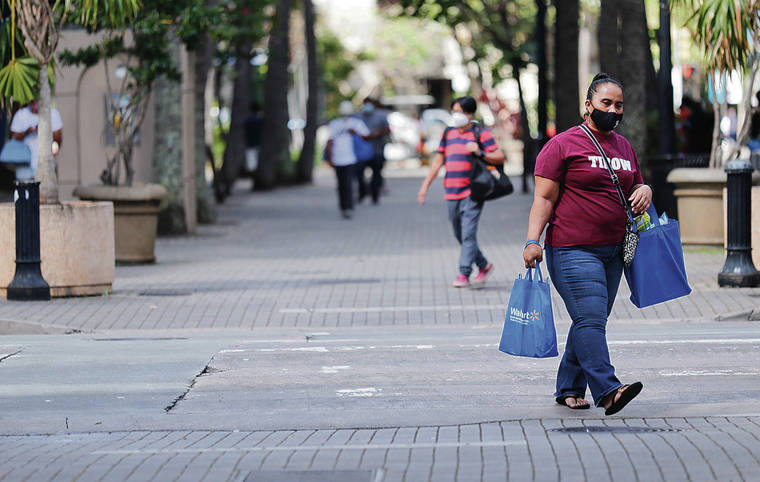Lt. Gov. Josh Green
said a Safe Travels Card, also known as a vaccine passport, is on the table
again with a target date of
May 1 for the loosening of interisland restrictions for vaccinated travelers.
Green told the Honolulu Star-Advertiser’s Spotlight Hawaii that leaders had met Monday morning and through the weekend to discuss a Safe Travels Card.
“If we do meet our internal deadlines, we’re hopeful by May 1 that we’ll be able to do it for intercounty/interisland travel,” he said. “I’m personally asking if we can possibly do it for trans-Pacific travel, but it may be that the governor and the mayors first want to do it for residents, which is nice for us, and then a month later come on board for trans-Pacific travel.”
Green said Gov. David Ige could make a determination about loosening the restrictions as early as Wednesday. For the time being, unvaccinated children must take a COVID-19 pre-test as defined by the Safe Travels Hawaii program. But Green said he hoped that in the future an antigen test might be offered. He said the state also might grant children whose parents have been vaccinated exemptions, but that’s unlikely until the state reaches herd immunity.
Details of the Safe Travels Card are still being finalized. However, Green envisions that the process would involve a traveler uploading
a picture of their official
vaccine card from the CDC. A drop-down box would then appear, and the traveler would type in their vaccine lot number and dates.
Green said the traveler would be required to present the card on arrival. The state would engage a software
provider like FirstVitals, CommonPass or CLEAR to ensure that the card is legitimate, he said.
The Safe Travels Card also might provide a way to vet attendees so that larger events like the Honolulu Marathon might return, he said.
Green’s comments came as state Department of Health officials reported Monday that there were 70 new coronavirus infections statewide, bringing Hawaii’s total since the start of the pandemic to 30,846 cases.
State health officials
reported no new coronavirus-related deaths as the statewide death toll remained at 471.
Monday’s new statewide infection cases included 48 on Oahu, 15 on Maui, five on the Big Island and two Hawaii residents diagnosed outside the state, according to health officials.
Health officials also said Monday that of the state’s total infection count, 1,278 cases were considered
active.
By island, Oahu has 824 active cases, Maui has 316, the Big Island has 127, Kauai has 10 and Lanai has one. Molokai has no active infection cases.
Health officials counted 4,541 new COVID-19 test results in Monday’s tally, for a 1.54% statewide positivity rate. The state’s seven-day average positivity rate is 1.6%, according to the Hawaii COVID-19 Data dashboard.
Monday’s seven-day average case count for Oahu is 58, and the seven-day average positivity rate is 2.1%, according to the mayor.
Getting to the point where a vaccination card is imminent has been a progression.
Earlier, Green had recommended loosening interisland travel restrictions as early as April 1. He also had recommended allowing trans-Pacific travelers, who have been properly vaccinated, to bypass the testing and quarantine requirements on May 1.
But Hawaii leaders wanted to ensure that Hawaii’s vaccine distribution could outpace the spread of COVID variants. They also wanted to see Hawaii’s COVID risk levels decrease. And, leaders wanted assurances that a vaccine passport wouldn’t be vulnerable to fraud.
Green said the state did arrest someone Friday for faking a COVID-19 test, which carries a penalty of a $5,000 fine and up to a year in jail.
But he thinks incidents
of people faking a vaccine passport would be far fewer, as falsifying a federal vaccination document is a felony charge that carries a penalty of up to five years in prison.
“Look, I don’t want us to have to be the pandemic police or the vaccination cops; I just want people to be honest. I know our people will be honest, but there will be people traveling from abroad and the mainland who might consider taking advantage,” he said.
Green estimates the number of people faking a vaccine card would be “well less” than 1 out of 100. And of those people, he said the positivity rate prevalence is about 1 in 1,200.
“So you are now talking about only 1 in 120,000 people would fake a card and be positive for COVID, so it will not affect us from a public health standpoint or a pandemic standpoint — but we still don’t want people breaking rules,” he said.
Travel to Hawaii has increased over the spring break season, which saw 775,497 travelers, including 629,656 visitors, screened by Safe Travels Hawaii between March 11 and Sunday.
Green said despite gains in travel to Hawaii, most COVID infections have been related to community spread.
He said vaccination distribution is going well for Hawaii, which as of Monday will have reached the point where every adult who wants to get vaccinated could start the process.
“I can’t believe we are about to touch our 1 millionth shot,” Green said. “When we’ve gotten 2 million shots, we’ll be done because that’s going to exceed the number of people who are willing to get vaccinated in our state. We’re at or beyond the halfway point already and expect a really robust six-week plan.”
While there are some people who are hesitant to get vaccinated, Green said he thinks “we’ll get to over 75% of our people, ultimately, in the program.”
Green said that he expects Hawaii by July 4 to “likely have achieved herd immunity, with the exception, of course, of our adolescents who are only now getting
approved to get the shots.”






